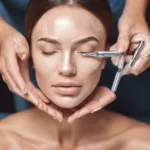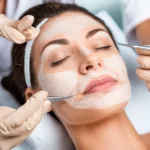29 November 2023
A Comprehensive Guide to Dermaplaning: Benefits, Risks, and Procedure
In the pursuit of smooth, radiant skin, individuals are constantly seeking innovative skincare treatments. One such treatment gaining popularity is dermaplaning. This minimally invasive procedure involves gently shaving away the top layers of skin to unveil a brighter complexion underneath. Dermaplaning offers a range of potential benefits, including the reduction of acne scars, exfoliation of dull skin, and the removal of unwanted hair. In this article, we will delve into the world of dermaplaning, exploring its benefits, risks, and the steps involved in the procedure.
What is Dermaplaning?
Dermaplaning is a skincare technique performed by dermatologists or healthcare providers using a handheld surgical device called a dermatome. Resembling a scalpel, the dermatome is used to delicately scrape away thin layers of skin and hair. This procedure can be performed on specific problem areas or the entire face, depending on individual needs. Dermaplaning is often utilized to diminish the appearance of fine lines, wrinkles, and acne scars.
Dermaplaning vs. Dermabrasion vs. Microdermabrasion: What’s the Difference?
While dermaplaning, dermabrasion, and microdermabrasion share the goal of removing the top layers of skin, they differ in terms of tools used and the extent of skin removal. Microdermabrasion involves spraying microcrystals or using a diamond-tipped device to exfoliate the skin, followed by suctioning away the dead cells. Dermabrasion, on the other hand, employs an electric rotating brush to remove the uppermost layers of skin, offering more dramatic results but also being more invasive and potentially painful. Dermaplaning utilizes a scalpel-like dermatome, allowing for deeper exfoliation than microdermabrasion and the removal of both skin and hair.
Benefits of Dermaplaning
Dermaplaning offers a multitude of benefits, including the reduction of fine lines, acne scars, and pitted skin. By exfoliating dull and dry skin, it promotes a brighter complexion and improves skin texture. Additionally, dermaplaning removes vellus hair, commonly referred to as “peach fuzz,” and enhances the absorption of skincare products. It can also serve as a preparatory step for other skincare treatments or surgical procedures.
Who is Dermaplaning Right For?
Dermaplaning is suitable for individuals seeking to improve the texture and appearance of their skin. It is particularly beneficial for those with sun-damaged skin, signs of aging, or specific skin conditions like rosacea. However, individuals with active acne breakouts, cold sores, skin rashes, burns, moles, or skin tags should avoid dermaplaning.
What Happens Before, During, and After Dermaplaning?
Before undergoing dermaplaning, a consultation with a dermatologist or aesthetician is necessary. During this discussion, goals for the session and any previous reactions to skincare treatments are addressed. Prior to the appointment, individuals may be required to cleanse their face, remove makeup and skincare products, and avoid certain medications. During the procedure, a numbing cream or anesthesia may be applied to minimize discomfort. The dermatome is then used to gently remove the top layers of skin. After the session, skincare products may be applied for deeper penetration. Visible results are immediate, but mild redness or sensitivity may occur temporarily.
Risks of Dermaplaning
While dermaplaning is generally safe, there are potential risks to be aware of. These include scarring, nicks and cuts, fever blisters, skin irritation, and thickened skin. However, these side effects are relatively rare.
Multiple Dermaplaning Procedures
Dermaplaning results are not permanent, and multiple sessions may be required to maintain the desired effects. Hair removal through dermaplaning may last several weeks before regrowth occurs. Many individuals opt for monthly dermaplaning sessions to continually enhance the look and feel of their skin.
Conclusion:
Dermaplaning has emerged as a popular skincare treatment, offering a range of benefits such as the reduction of acne scars, exfoliation of dull skin, and removal of unwanted hair. While it is generally safe, individuals should consult with a dermatologist or healthcare provider before undergoing the procedure. By adhering to professional guidance, individuals can achieve smoother, brighter skin through the art of dermaplaning.



